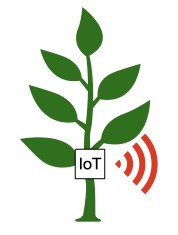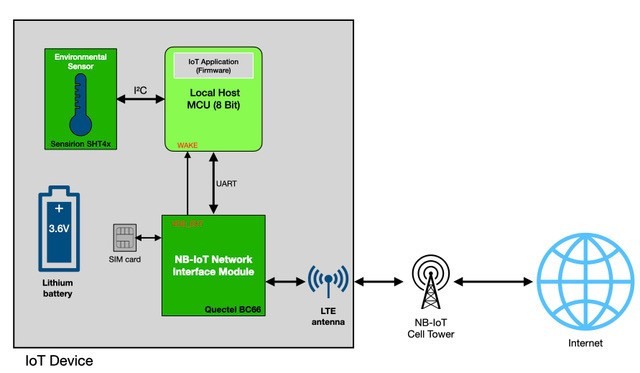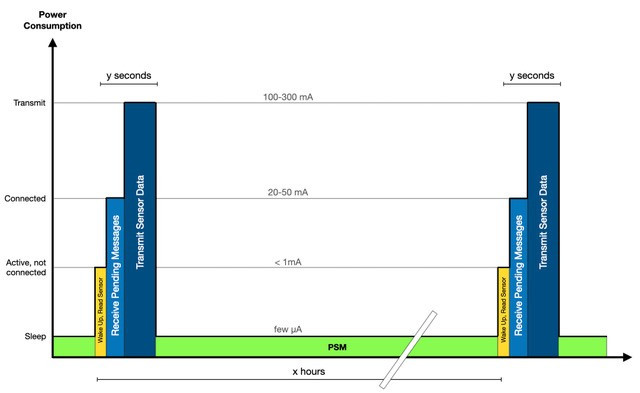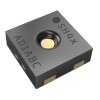Monitoring of a remote location is a typical IoT application, but target use cases might differ. Sometimes, observed parameters are not changing quickly and are not critical per se, but business owners are asking for regular updates, e.g., every few hours. Let’s take the example of a “tree sensor”, an IoT solution monitoring the health status of trees. This is particularly interesting for cultivated farming areas, e.g., for a nut plantation. For this purpose, a battery-powered sensor IoT device is mounted on a reference tree where it collects some environmental data like humidity (resp. draught) which is essential information for plantation owners to optimize growth, yield, etc.


- a metering device for the fill level of a silo or
- a liquid flow sensor reporting usage and indicating leakages in pipelines or
- devices for various surveillance and object detection use cases or
- an asset tracker providing the geo-position of a valuable mobile object
These are typical “push” applications where the IoT device is inactive for most of the time, it just “wakes up” occasionally when triggered by a fixed schedule or an external event. NB-IoT is a cellular network technology (LPWAN = low power wide area network) which has been particularly specified to meet this kind of requirement, esp. if stationary IoT devices are used for infrequent transmission of small payload data packages.
A network interface module (aka “modem”) is a key component for cellular IoT devices. Quectel is a leading manufacturer in this area. The NB-IoT module Quectel BC66 fully fulfils the requirements for this design concept for a battery-driven IoT device.

For improved protection against harsh environmental conditions, the NB-IoT antenna should be mounted inside the IoT device casing. For this purpose, 2J Antennas is offering suitable adhesive and small-sized products for an integrated solution.

Figure 1: Battery-powered NB-IoT Environmental Sensor - Block Diagram
Note: SOS electronic is a qualified supplier of products by Quectel, Sensirion and 2J antennas. To complete the low-power IoT solution, SOS electronic is also offering a broad range of Lithium batteries from Fanso, Xeno and EVE.
Minimum Power Design with NB-IoT and Quectel BC66
To support the reduction of IoT device power consumption as much as possible, NB-IoT network technology offers an efficient feature called power saving mode (short: PSM) which allows an NB-IoT device to switch off most parts of the network interface incl. its transceiver RF section for an agreed period of inactivity.
The duration of this interval is determined by network timer T3412 (aka “TAU Timer”) which is primarily used by the NB-IoT device to perform a periodic Tracking Area Update (TAU). This is a standard LTE feature to notify the availability of a user device to the connected network. Once the device has been connected successfully to the network, it remains registered during PSM intervals, but transmission activity will wait until the T3412 timer has expired.
By nature, longer PSM periods will result in less power consumption. Depending on the IoT use case, it is now up to the developer to determine the ideal time period for their device to remain in PSM mode. According to the 3GPP specification, T3412 can be programmed for PSM intervals of up to 413 days (!).

Figure 2: Periodic Device Activity (simplified)
During agreed PSM periods all download traffic to the registered but unreachable IoT device will be buffered by the network. Our design concept for a battery-powered “push” device is based on the idea that all local IoT activities are handled during a single periodic time slot (see Figure 2), i.e., read sensor, receive pending messages (e.g., an operator remote control command), transmit IoT payload data.
Most of the time (approx. 99,99%), the device will remain in deep sleep mode and consumes a few µA during this time. After T3412 expires, the Quectel BC66 module will retrieve pending messages from the network, if any. During reception events, the module will consume around 30 mA, during uplink transmission it will even draw around 200 mA at 23dBm output power. Over time, the frequency and duration of these short power consumption peaks will have a significant impact on battery lifetime. It is no surprise that doubling the frequency of activity periods (e.g., from once a day to twice a day) will decrease battery lifetime by half.
But on top of this, there are many other additional aspects which will contribute to the overall power consumption of the device. For example, positioning and impedance matching of the device antenna are critical design aspects which are significantly impacting RF performance. Antenna matching is required to maximize output power at a specific NB-IoT carrier frequency. In general, device location has an impact on power consumption and the distance to the connected cell tower should be as short as possible to maximize signal efficiency and quality. This is a critical point because the operation of battery-powered devices at coverage extension (CE) level 2 should be avoided. This NB-IoT feature is helpful to provide coverage in difficult-to-reach areas but works with repetitions and extra error correction codes which are dramatically increasing payload data overhead and transmission times. So, from a deployment point of view, it is beneficial to work with an MVNO (“virtual” network operator) allowing you to select from a choice of networks to connect to, instead of just one. See Ref. 5 for further explanation of these topics.
Quectel BC66 offers several options to support low power device design leveraging the NB-IoT PSM feature (see Ref. 2). The IoT device can initiate requesting the NB-IoT network to enter PSM state via AT command, which allows the device to enter deep sleep for the agreed PSM interval.
In deep sleep mode, the UART interface is not functional and there are only two ways to return the module to an active state:
after expiration of the internal periodic TAU timer or by an external wake-up event.
External wake-up events are indicated by toggling the PSM_EINT pin of the Quectel BC66 module. This method can be used for a predefined local event, e.g., an exceeding threshold (e.g., saying “it is too hot”) or if the presence of an object has been detected. This is another typical “push” IoT application which can be addressed by Quectel BC66 resp. in cooperation with an NB-IoT network. But for our “tree sensor” example, we use mentioned internal periodic TAU timer for wake up.

The concept for a Battery-Powered “Push” Device
During agreed PSM periods, all device components are configured to work in their individual idle modes with extremely low power consumption.
For example, the Sensirion SHT4x humidity sensor draws 1 µA max. at 25°C (see Ref. 4). To achieve a long lifetime of the IoT device, proper orchestration of power management features of all three main components is required: Quectel BC66 network module, host MCU and sensor (see block diagram Figure 1). The master role is alternating between two of them: IoT device application is executed by the host MCU, but wake-up management is handled by the Quectel BC66 cellular module in cooperation with the NB-IoT network. This is done via the VDD_EXT output pin which is an external indicator that the BC66 module is currently in deep sleep mode.
As such, whenever Quectel BC66 returns from a deep sleep, its VDD_EXT signal wakes up the host MCU and the embedded IoT application program (firmware) to take over the control of the IoT device – according to use case requirements. For this software, reconnection to the registered network and request for pending downlink messages will be the first things to do. Waking up the sensor chip and kicking off a measurement cycle also needs to be done within each single activity period (see Figure 2). When finished, the MCU will pass IoT payload data to the BC66 module, request for data conversion into the selected protocol format (e.g., UDP or MQTT) and initiate data transmission via the cellular network. Finally, the MCU will ask the BC66 module to initiate the next PSM period, and the IoT device re-enters the specified infinite loop of activity and PSM cycles.
In the end, the power consumption of each component during all active and idle periods will aggregate to the total power consumption of the IoT device. In our case, an 8-bit MCU and the SHT4x sensor with low-power idle modes consuming less than 1 µA have been selected. For our calculation, we assume that we will have an activity slot every 12 hours (i.e., IoT data will be reported twice a day) which takes 5 seconds each. During these active periods, device power consumption will be dominated by the RF power required to re-connect and transmit the IoT data package to the network.
For our use case, selected components, and configured parameters for short activity periods and long PSM periods are leading to the total power consumption of ca. 275mAh per year (refer to Ref. 5 for a more detailed explanation and a spreadsheet of how these numbers are calculated). With this approach, a fixed AA-sized 3000mAh Lithium battery will provide an amazing zero-touch product lifetime of 10,9 years – which is a good value proposition for a remote monitoring IoT solution which can be used everywhere.
Are you interested in more information about Quectel, Sensirion products or technical advice on product selection?
Or do you have another question or request? Fill in the following form, we will be happy to help you.
Do you like our articles? Do not miss any of them! You do not have to worry about anything, we will arrange delivery to you.



















